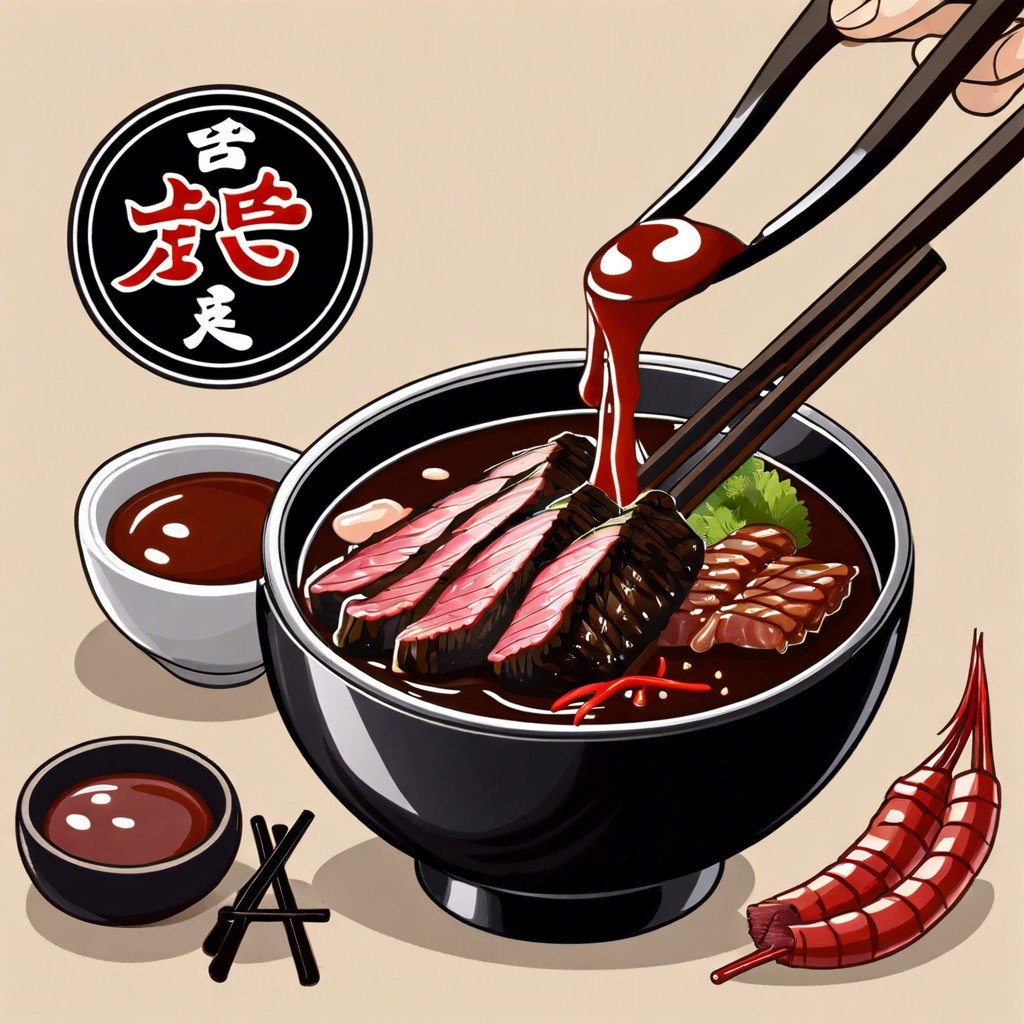This article provides a step-by-step guide to creating authentic Japanese BBQ sauce, infusing your grilled dishes with a balance of sweet, savory, and umami flavors.
Key takeaways:
- Yakiniku sauce combines sweet, savory, and tangy flavors.
- Core ingredients: soy sauce, sugar, mirin, sake, garlic, sesame oil.
- Adjust ratios to suit taste or dish.
- Directions: combine ingredients, heat, simmer, strain (optional), cool.
- Versatile sauce for grilling, marinating, dipping, or fusion cooking.
Japanese BBQ Sauce | Yakiniku Sauce

Central to Japanese BBQ, yakiniku sauce combines sweet, savory, and tangy elements, creating a vibrant flavor profile ideal for grilling.
This fusion of soy sauce, sugar, and mirin forms the essential savory backbone, while garlic and sesame add pungency and texture.
Fruit purees or juices are often incorporated to impart subtle sweetness and tenderize the meat.
The inclusion of rice wine or sake intensifies the umami factor, essential for a full-bodied taste.
Adjusting these core ingredients determines the final sauce’s balance, aligning with the delicate nuances of Japanese cuisine.
Ingredients
To craft an authentic Japanese BBQ sauce, gather the following ingredients:
- Soy sauce: The foundational element, imparting umami and a salty depth.
- Sugar: Balances the soy sauce’s saltiness with its sweetness.
- Mirin: A sweet rice wine that introduces a complex sweetness and glaze-like consistency.
- Sake: This Japanese rice wine adds a subtle aromatic nuance.
- Garlic: Finely minced or grated for a pungent, earthy backbone.
- Sesame oil: Delivers a nutty flavor and enriches the sauce’s mouthfeel.
- Toasted sesame seeds: Provide a pleasing texture and intensify the sauce’s sesame profile.
- Green onions: Chopped to infuse a sharp, fresh contrast.
- Gochujang or chili paste (optional): Adds a hint of Korean influence with its spicy kick.
Each component contributes to a harmonious blend of sweet, savory, and umami flavors that are signature to Japanese BBQ sauce. Adjust their ratios to suit your palate or the dish it will accompany.
Directions
Begin by combining soy sauce, mirin, sake, sugar, minced garlic, grated ginger, and a dash of sesame oil in a saucepan. Heat the mixture over medium heat, stirring consistently, until the sugar is fully dissolved. Do not allow to boil to preserve the delicate flavors of the mirin and sake.
Once the sugar is dissolved, reduce heat to low and add a finely chopped apple or a splash of apple juice for a touch of sweetness, along with a small amount of white miso paste to incorporate depth and umami. Simmer gently, stirring occasionally, until the sauce thickens slightly, achieving a glossy consistency.
Remove the sauce from heat. If preferred, strain to remove garlic and ginger bits for a smoother sauce. Allow to cool to room temperature, after which the sauce can be used immediately or stored in a clean bottle or jar in the refrigerator for future use. The flavors meld and intensify over time, making it even more flavorful after a day or two.
Why It Works
This sauce harmonizes sweet, savory, and tangy elements, resulting in a complex flavor profile that elevates any grilled meat. The combination of soy sauce and mirin creates a rich umami backbone, crucial for authentic Japanese flavor, while the sugar adds a necessary counterbalance of sweetness.
The inclusion of sake enhances the depth of the sauce and helps tenderize the meat. Garlic and sesame oil infuse aromatic notes that are signature in Asian cuisine.
The versatility of this sauce comes from its balance; it’s robust enough to stand up to hearty flavors but not so overpowering as to overshadow the primary ingredient. It seamlessly fuses with the natural flavors of the food, rather than masking them.
What Is Japanese BBQ Sauce Used For?
This versatile condiment is a staple at yakiniku (Japanese BBQ) restaurants and is commonly brushed onto meats before grilling. Aside from its traditional role, it’s also used to marinate beef, pork, chicken, and even seafood to impart a rich, umami flavor. Vegetarians haven’t been forgotten—its complexity enhances grilled vegetables and tofu. Think of it as a dip, too; skewered bites or fresh, crisp veggies dipped into this sauce bring an authentic touch to any table.
In fusion cooking, it brings an innovative twist to burgers, glazes, and wings, encouraging bold experimenters to bypass the usual BBQ staples for a taste of Japan.